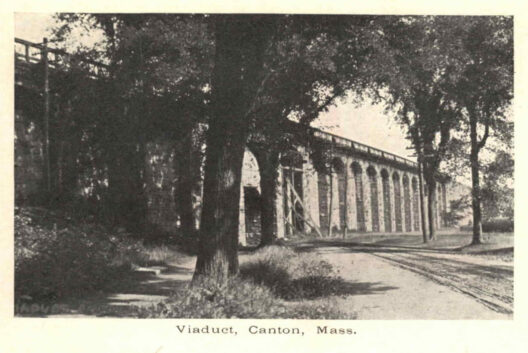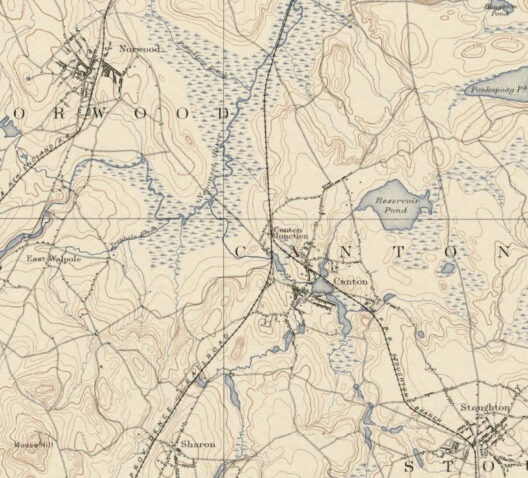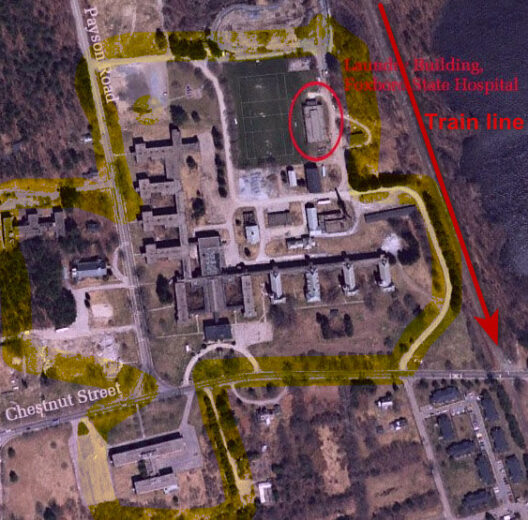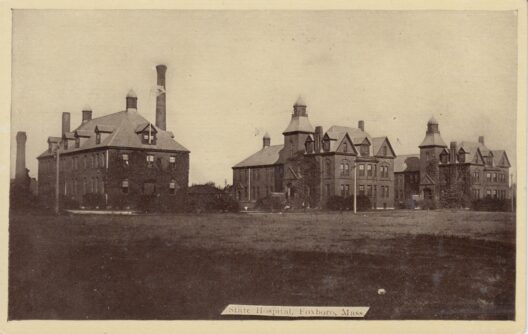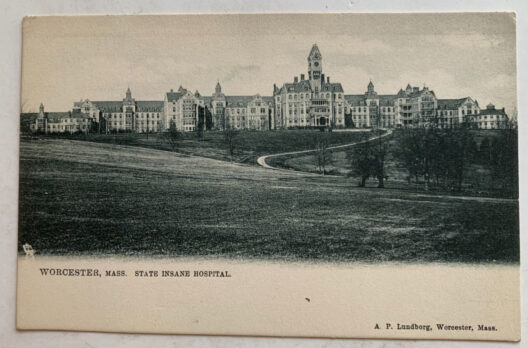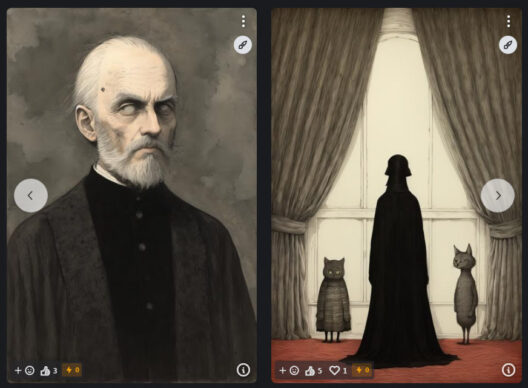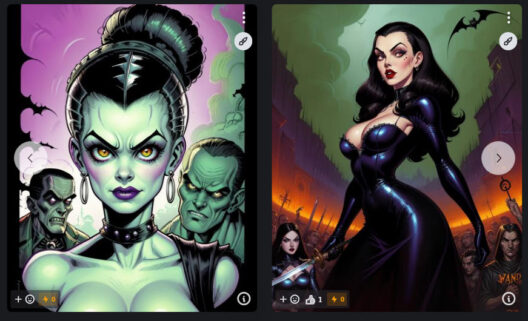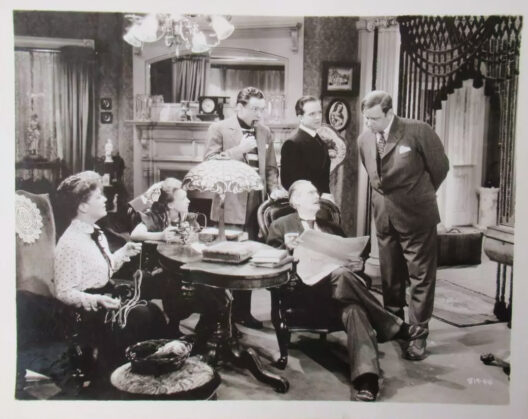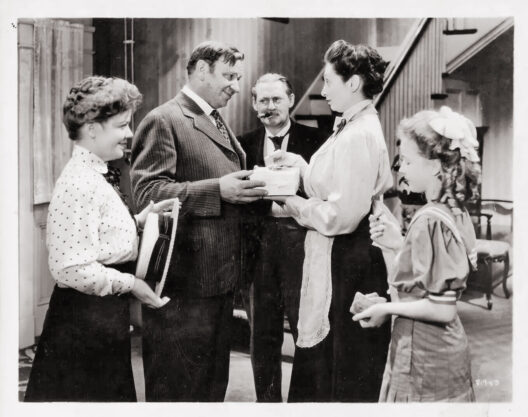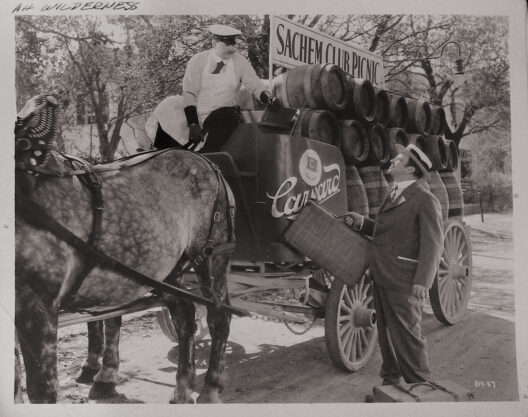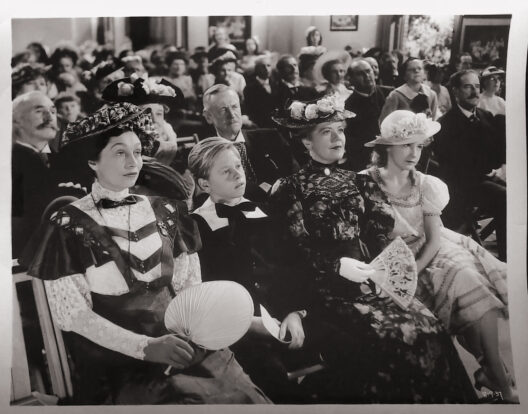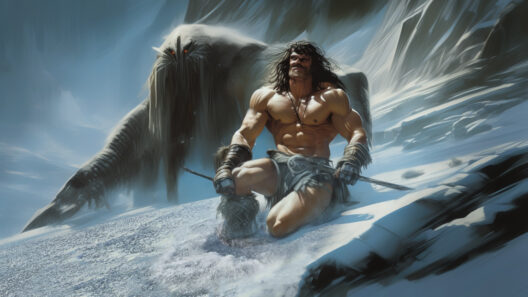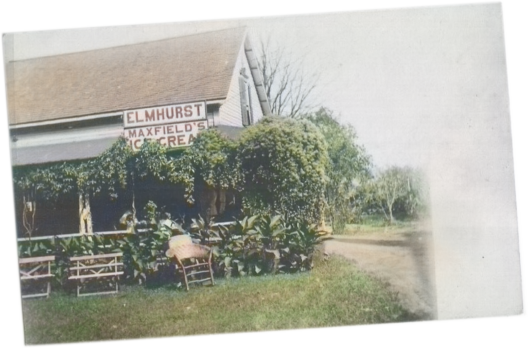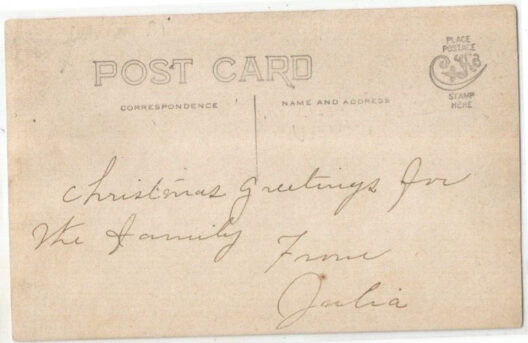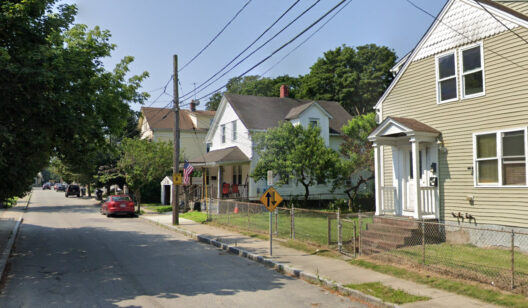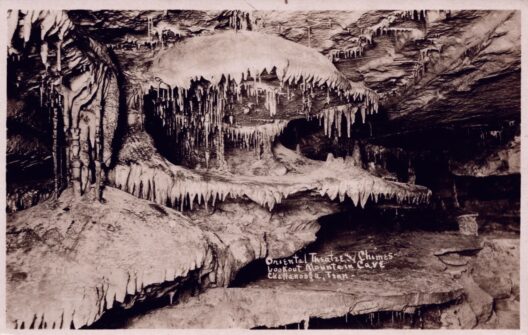In Lovecraft’s “The Shadow over Innsmouth”, he writes of the “sanitarium at Canton” and going to “… that Canton madhouse, and [then] together we shall go to marvel-shadowed Innsmouth.” Canton, Massachusetts, is about twelve miles south of the city of Boston. And about two-thirds of the way from Providence to Boston. At circa 1900 there was, however, no madhouse or even a disease sanatorium there.
But the presence of Canton Junction on the Providence – Boston train line suggests Lovecraft knew it, at least from the train windows. There is a large viaduct which carries the train, and Lovecraft would have enjoyed sweeping views across the Canton topography. He must have been across it many times.
Longest and tallest railway viaduct in the world, when built in 1835.
Interestingly Canton is about two miles east of Walpole, and of course Walpole is also the name of the father of the gothic novel. There was however no asylum at Walpole, Mass. Looking at the list of train stations on the line, and the map, Lovecraft may have been able to see East Walpole in the distance, across the marshland, from the Canton Viaduct.
There was however a large and real asylum at Foxborough (aka Foxboro) (opened 1893, closed 1976), originally the state’s treatment asylum for chronic alcoholics. Foxborough was two train stops before Canton, on the Providence to Boston line. It’s thus not impossible Lovecraft knew that asylum from the train window, as it was likely within sight as the train passed.
Train line passing alongside the asylum site, Foxboro station just a quarter mile south. (With thanks to the ghost-hunter who identified the laundry building of the site, and thus gave me my bearings).
A blogger who has investigated it talks of a road approach through marshlands made of “cranberry bogs [that] looked like blood pools”. He also usefully notes… “After 1905, the Massachusetts Hospital for Dipsomaniacs and Inebriates went through a gradual transition to a psychiatric institution”, which another source states was due to the alcoholic inmates constantly escaping in search of drink. Thus by the time Lovecraft came to write “Innsmouth”, it was indeed a general “madhouse”.
What of “my poor little cousin” in “Innsmouth”? I assume he was loosely modelled after Lovecraft’s beloved-and-lost cousin, Phillips Gamwell. Thus Gamwell’s home in Cambridge, Mass., might be the place to look. But I can find no asylum or sanitorium there.
There was also the large official Massachusetts State Hospital for the Insane, at Worcester, which may have formed a mental model for Lovecraft. It certainly looks like the sort of place many readers will have in mind.
What of Canton, Ohio? No madhouse there. The nearest was Massillon which is eight miles away, and also the main Ohio state asylum at Columbus some 130 miles from Canton…
But my feeling is the Foxborough asylum was the inspiration for the Lovecraft called the “Canton madhouse”, knowing that readers in his circle who knew the Boston – Providence railway line would make the connection with Foxboro madhouse (four miles south, on the train track, from Canton).
Lovecraftians will also recall Lovecraft’s planned but never written ‘Foxfield’ stories. See: Will Murray’s “Where Was Foxfield?” in Lovecraft Studies No. 33 (1995). Also to be found in Dissecting Cthulhu: Essays on the Cthulhu Mythos. For those unable to pay the prices now asked for either of these, The Lovecraft Encyclopedia usefully summarises the essay… “it indicates that Foxfield is east of Aylesbury and Dunwich and northwest of Arkham.”

